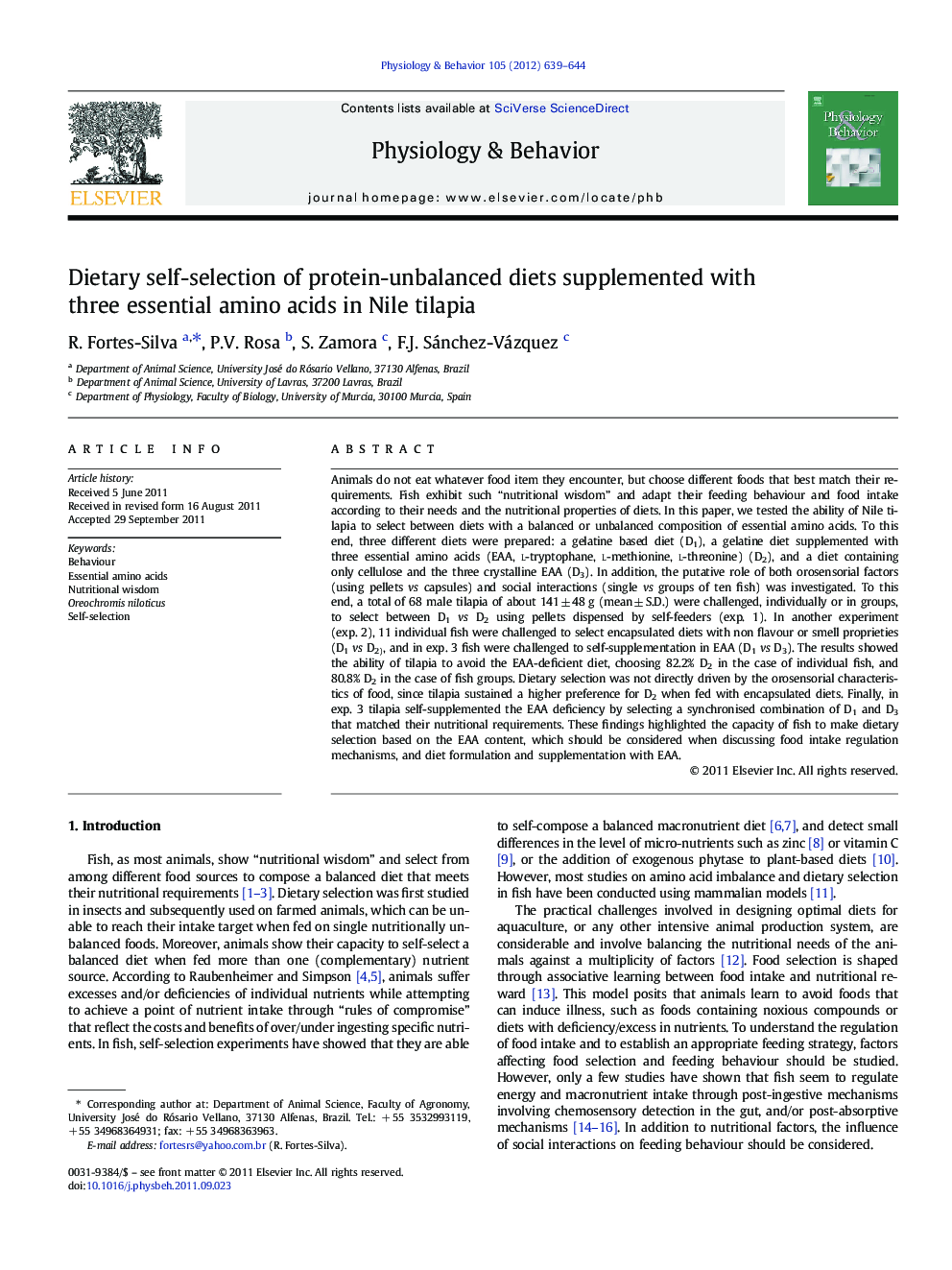| کد مقاله | کد نشریه | سال انتشار | مقاله انگلیسی | نسخه تمام متن |
|---|---|---|---|---|
| 5925399 | 1166347 | 2012 | 6 صفحه PDF | دانلود رایگان |

Animals do not eat whatever food item they encounter, but choose different foods that best match their requirements. Fish exhibit such “nutritional wisdom” and adapt their feeding behaviour and food intake according to their needs and the nutritional properties of diets. In this paper, we tested the ability of Nile tilapia to select between diets with a balanced or unbalanced composition of essential amino acids. To this end, three different diets were prepared: a gelatine based diet (D1), a gelatine diet supplemented with three essential amino acids (EAA, l-tryptophane, l-methionine, l-threonine) (D2), and a diet containing only cellulose and the three crystalline EAA (D3). In addition, the putative role of both orosensorial factors (using pellets vs capsules) and social interactions (single vs groups of ten fish) was investigated. To this end, a total of 68 male tilapia of about 141 ± 48 g (mean ± S.D.) were challenged, individually or in groups, to select between D1vs D2 using pellets dispensed by self-feeders (exp. 1). In another experiment (exp. 2), 11 individual fish were challenged to select encapsulated diets with non flavour or smell proprieties (D1vs D2), and in exp. 3 fish were challenged to self-supplementation in EAA (D1vs D3). The results showed the ability of tilapia to avoid the EAA-deficient diet, choosing 82.2% D2 in the case of individual fish, and 80.8% D2 in the case of fish groups. Dietary selection was not directly driven by the orosensorial characteristics of food, since tilapia sustained a higher preference for D2 when fed with encapsulated diets. Finally, in exp. 3 tilapia self-supplemented the EAA deficiency by selecting a synchronised combination of D1 and D3 that matched their nutritional requirements. These findings highlighted the capacity of fish to make dietary selection based on the EAA content, which should be considered when discussing food intake regulation mechanisms, and diet formulation and supplementation with EAA.
⺠Tilapia a freshwater specie was capable to compose a balanced diet. ⺠Fish learnt to associate between the colour and the content of the capsule. ⺠Changing in position of capsules or self-feeders did not impair the ability of fish to compose a diet. ⺠Tilapia self-supplemented the essential amino acids deficiency. ⺠Tilapia synchronized to the restricted protein in the time and aminoacids intake.
Journal: Physiology & Behavior - Volume 105, Issue 3, 1 February 2012, Pages 639-644